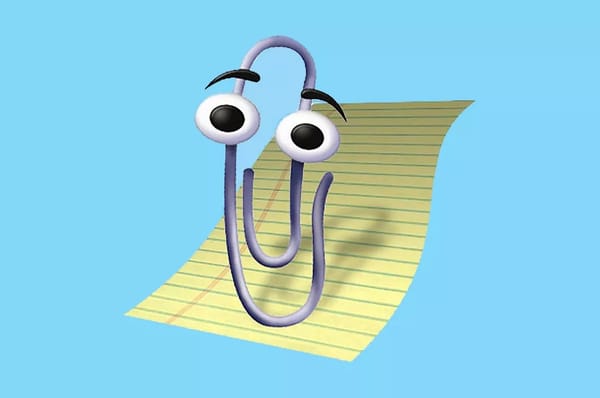Everything Everywhere: EE’s brand new strategy
The mobile network is trying to be more things. Will it pay off?

“New EE does more” – image from ee.co.uk
Steve Jobs evangelically claimed that Apple’s winning strategy is how the company controls both the software and hardware of it’s products, and it was those two elements that lead to a differentiated, profitable, obsessed-over Apple.
Ten years ago, Tim Cook began adding a third category to this mix: services. According to Cook, it’s the intersection of these three elements that make Apple, Apple.
Fast forward to 2023 and that strategy has paid off. Apple’s Services business, which consists of iCloud, Apple TV+, Music, Fitness and more, is massive. In Q3 2023 alone, services revenue at Apple stood at a staggering $21 billion. That’s bigger than Apple’s iPad, Mac and Wearables businesses combined, and about half of the value of it’s iPhone business.
A push into services was a masterstroke move by Cook – it took a wealthy user base and incrementally added value for customers, and as a result, revenue for Apple.
What’s this got to do with a mobile phone network in the UK?
Well, I think EE have taken a leaf out of Apple’s strategy book.
“New EE”
From EE’s press release:
After over a decade spent as the UK’s biggest and fastest mobile network with UK market leading full fibre broadband, EE is broadening its horizons from traditional telecommunications services, and transforming this household brand ready for a new and exciting era as the UK’s largest subscription business. Built on the fundamental ambition to become the most personal and customer-focused technology brand in the UK, EE will share the news with the nation this Friday in the biggest brand campaign the business has embarked on since it first launched in 2012.
And, from Reuters:
EE, which is already Britain's largest retailer of smartphones and has 25 million customers many on monthly deals, said the new platform will sell gaming consoles, tablets, upgrade packages and subscriptions to existing EE customers plus the rest of the market.
This is clearly a mirror to Apple’s services and subscriptions push, and I think where it seems a stretch now, if executed properly and with discipline, it could be a smart move. If EE’s 25 million customers all purchased just one more thing, or moved a subscription to EE from somewhere else, that’s a business-transforming move. It’s all about telling customers – and the market – that EE isn’t just a commodity, it’s a retail and services brand too now.
The key difference – and biggest risk – for EE, though, is whether their customers will care. People will buy anything from Apple, because – say what you want about them – people love Apple products. The brand is consistently rated as the most loved in the world, and extending that brand into new services that are seamlessly integrated into current products is an easy sell and a no-brainer. I’m not sure the same is true of EE.
EE is infrastructure. It’s not a tangible product that people use every day and grow affinity for. It sits in the background. So – to expand into other offers, EE needs to be more present in people’s lives in the UK, and they need to increase brand affinity dramatically.
Apple achieves this with product. I think EE can only achieve this with brand marketing. And ultimately, that’s an expensive strategy.
EE ID
From a different EE press release:
EE, one of the UK’s largest subscription businesses, has today announced a landmark shift toward platform services, expanding its offering from selling traditional telecoms. EE unveiled the first of a new suite of products and services open to all UK consumers, via a new integrated platform, powered by an EE ID identity management and log in.
I can see how EE got here, but I don’t think elevating “EE ID” as a key message is going to be well understood by consumers. Here’s how I think it happened:
- “Big tech” accounts are very valuable, because they have credit card information on file
- Credit card on file enables one-click purchase for products and services
- Which enables services like the App Store, Netflix, Amazon Prime, Spotify (all of which, except the latter, are very profitable businesses)
- EE have observed this mechanic, and decided they want it too
The problem, I think, is that they’ve leapfrogged an important step in retaining credit card info and attracting non-EE customers – a reason to add this information in the first place. A differentiated, you-can-only-get-this-on-EE offering.
This might well come soon, but I don’t see it yet.
If it does come, though, it’ll be under their four new pillars for serving customers.
Home, Game, Learn, Work
EE say that they’ve done extensive customer research and that research says that customers are looking for EE to play a greater role in these aspects of their lives. And these pillars broadly make sense, too – they’re all, with the possible exception of Learn, line extensions of what the company already offers. This framework allows them to more neatly tell the story.
The Home and Work pillars seem to make the most sense to me, although I confess I’m not a gamer or a student (or a person with kids). I expect that what EE have begun to offer under all four of these pillars will evolve over time, and today’s announcement is more of a statement of intent than a polished, final offering.
The fact that there is no mention of 5G or mobile in their headline messages is also a statement of intent: that their mobile network is recognised enough, it’s a given, and so they’re demoting it as the infrastructure of it’s use-case led brand messaging.
An Apple TV first
Although Apple is famously resistant to partnerships, over the last few years, Apple TV has increasingly been the exception to that rule. You can now find the Apple TV app on pretty much every new Smart TV. This makes sense – for a service like Apple TV+ to work, it needs to be on TVs that people already have. It’s not differentiated enough for people to buy a brand new TV – an Apple TV – for.
Yet today, EE announced a different kind of Apple TV partnership – this time it’s not about the subscription service, but rather the Apple TV box.
From Pocket Lint:
The new EE will offer a new take on EE TV, which is where the customised Apple TV 4K box comes in. When you go to choose your EE TV, you'll have a choice of EE's own boxes - the TV Box Pro or the TV Box Mini (pictured down below) - or the Apple TV 4K box. The Apple TV will come with an EE-branded remote, giving you direct access to live TV and the guide.
Apple is – in a what I am pretty sure is a first for the tech giant – providing the hardware for a packaged solution for EE. And EE are providing an app for watching live TV – which you can’t get anywhere apart from on this special edition Apple TV. And a custom EE remote?!
This partnership makes a tonne of sense for EE, but I can’t figure out what’s in it for Apple, other than more upsells to Apple TV+. Then again, maybe it’s just that.
“To inspire and free the innovator in everyone so that we can all find out how good we can be”
It’s certainly a bold new brand platform with a company strategy to match, and it makes sense to align to researched customer needs as everything becomes internet connected.
EE are making a play to be as significant in our lives as big tech has – to upgrade itself from providing the piping to helping you game, learn, work and (control your?) home.
With 25 million customers already, it has a great place to start. But it doesn’t have the same kind of daily life footprint as Amazon, Google or Apple – the companies it’s ultimately trying to model itself on.
And that might be okay. They don’t need to reach big tech status for this big refresh to be a success. All they need is for enough customers to see them as more than a mobile provider, because that means people buying their next gaming console at the EE Store instead of Curry’s or subscribing to something new through their EE ID.
That is enough to meaningfully change the nature of EE’s business.





